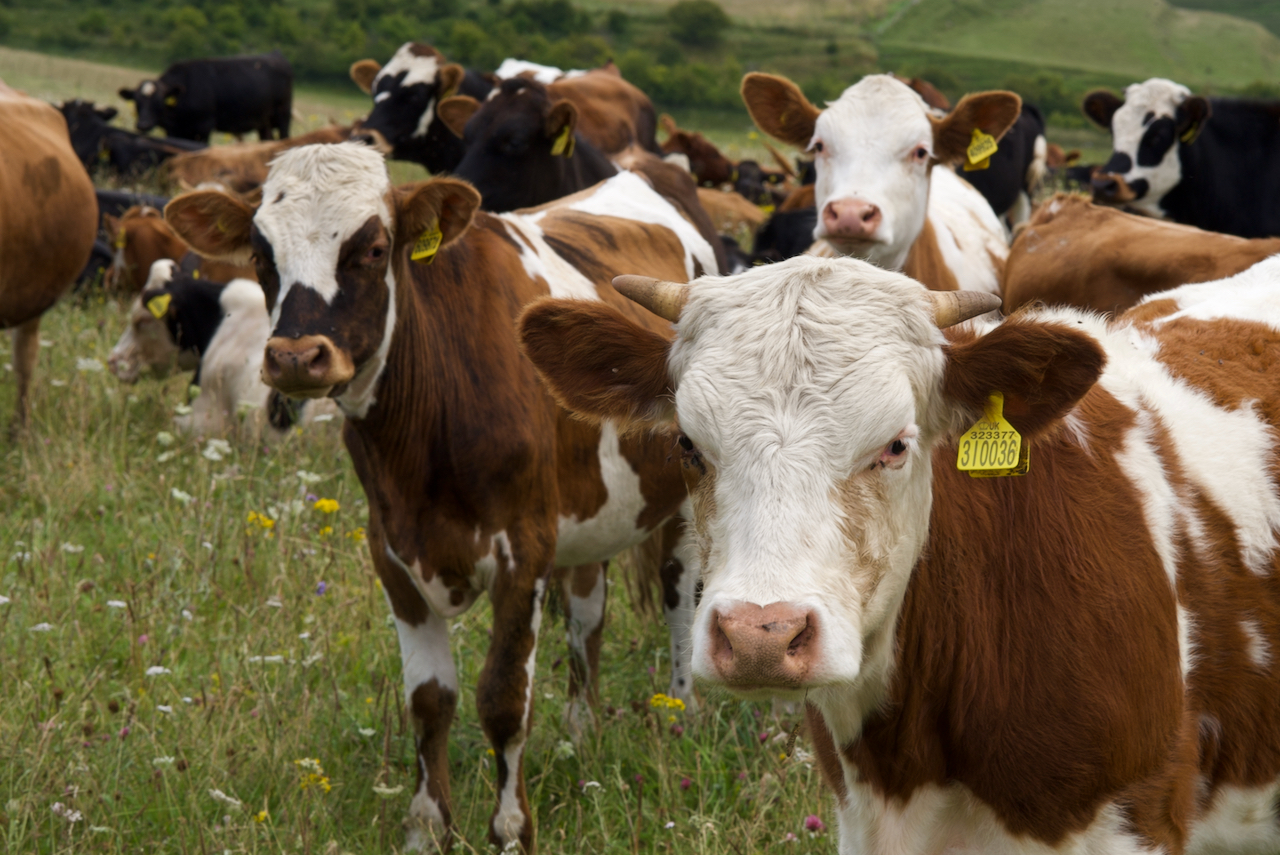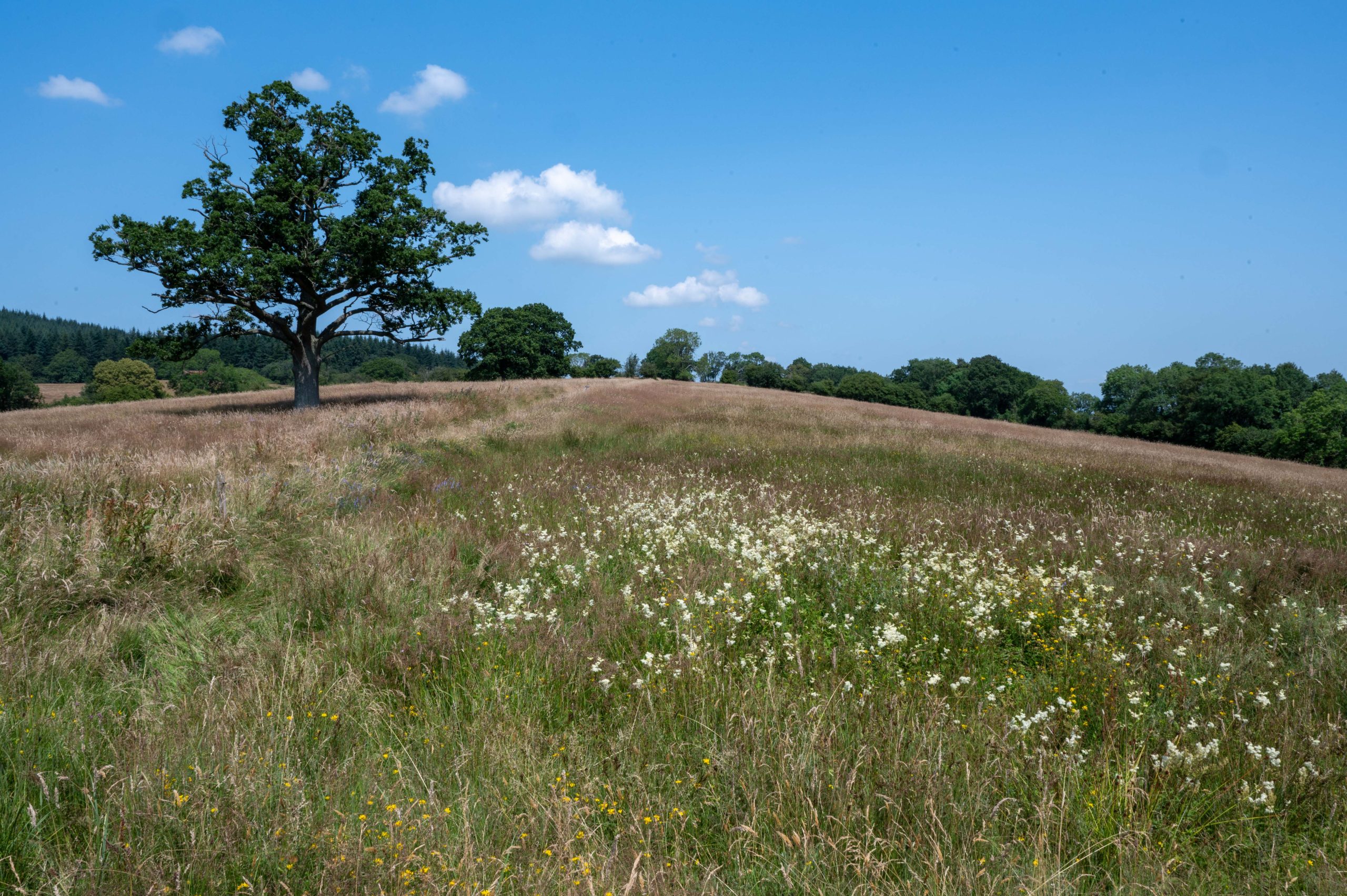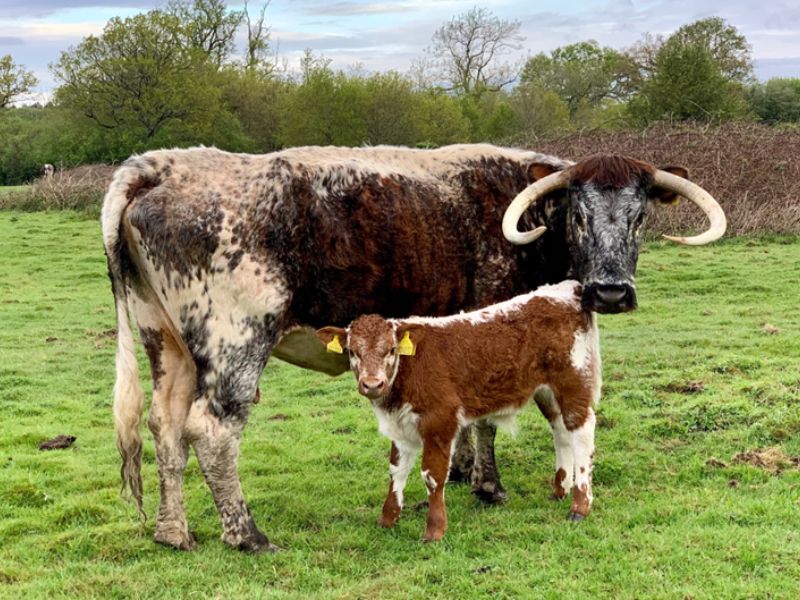The Truth about Methane

By Luke Dale-Harris and Tim Martin
The fact that the methane belched out by cattle and sheep is a potent greenhouse gas, many times more powerful than carbon dioxide, is often cited as a reason we should cut back meat consumption to fight climate change. So far, so simple, but if you delve a little deeper into the science of methane a different truth emerges, one that has changed our whole attitude to the meat we should and shouldn’t eat.
Methane is Rapidly Recycled
The critical thing about methane, or CH4 to give it its scientific name, is that it is constantly being recycled: it stays in the atmosphere for about 10 years before breaking down into carbon dioxide (CO2) and water. The carbon is reabsorbed into plants via photosynthesis, into animals’ bodies when the plants are eaten, and into soil via plant’s roots and livestock manure and urine. The methane burped out by most cattle isn’t adding any new CO2 to the system, it is merely cycling a set amount of carbon between soil, plants, livestock and the atmosphere.


But if ruminants turn CO2 into methane, which is a more potent GHG, surely that is bad for the climate?
This is the crux of the argument that cattle and sheep are engines of global warming: They take naturally cycled CO2 and turbocharge its global warming potential by turning it into methane. But, while this is true, the fact that methane is recycled to CO2 after 10 or so years means that for every time an animal burps out a kilo of methane, another kilo of methane in the atmosphere is being converted back to CO2 and H2O. So, the amount of ruminant produced methane in the atmosphere only increases if we grow the number of cattle and sheep, and globally that is not happening. Conversely, if you decrease the herd size it has a powerful cooling effect.
CO2 lasts for centuries
Burning fossil fuels is a much more serious problem for the climate, because it is takes carbon that had been locked underground for millions of years and adds it to the atmosphere, in the form of CO2, where it continues to cause global warming for hundreds if not thousands of years. Although it is a less powerful greenhouse gas than methane, CO2 continues to do harm for far longer.
But why do the UN and others tell us beef’s carbon footprint is through the roof?
There are a few reasons for this. Firstly, most climate assessments look at conventional beef production on a global level, taking into account the vast carbon emissions of everything from deforestation fuelled by soy farming for livestock feed, to nitrogen fertilisers. But they also use a calculation for enteric methane emissions that doesn’t adequately take into account the fact it is recycled, and therefore vastly overstates it’s global warming potential. The IPCC now recognise this, as covered in their 6th Assessment report, produced in 2021 (Chapter 7, page 122-124), suggesting that a new system for accounting emissions from livestock called GWP* could be introduced in the future.


A matter of urgency
Pasture-fed cattle do still burp out a lot of methane, and even though it is recycled, and their production can be good for soil and wildlife, some environmentalists make the case for eliminating them too, on the basis that we need to pull every lever we can to tackle climate change with maximum urgency. Whilst that’s true at the global level - we need to be reducing the numbers of cattle on the planet not increasing them - at a country level we can be more flexible. For a damp island nation like the UK, which excels at growing grass, and where many of the rarest wild animals and plants need grazed grassland to survive, it’s a very different story. The real problem here isn’t 100% pasture fed cows, it’s burning fossil fuels, as we put petrol in our cars, heat our homes with gas and fly around the world. This is what we need to address to stop the climate changing, rather than getting hung up on the methane that has always cycled through our cows, fields and skies.
What should we do about Meat?
Even if ruminant produced methane isn’t the issue we once thought it was, this doesn’t mean we should continue with meat-eating as usual. The huge rise in the popularity of poultry and pork has massively increased the climate impacts from those farming sectors, largely through the intensive growing of grains to feed them, including soy and all the deforestation that has involved. So we should reduce our overall consumption of all meat, but especially of pork and poultry. The only thing we can eat proportionately more of is 100% pasture-fed beef, because it can be produced from grassland alone, without the need for climate-damaging chemicals, ploughing or imported grains like soy, and because of its considerable benefits to soil health and biodiversity. Sheep can bring similar benefits but many of our uplands still have too many of them and suffer from over-grazing. That’s why beef has the potential to be our most sustainable type of livestock.



